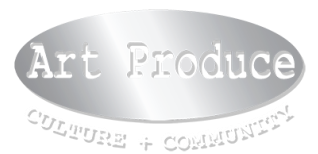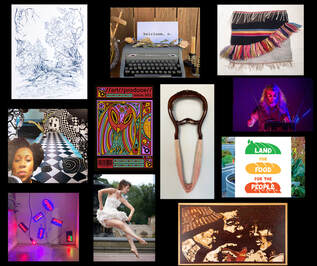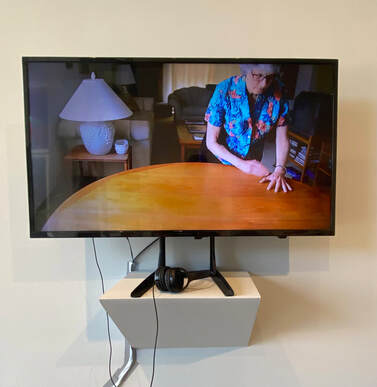
Anna Brown Massey
My new work in a quiet time resides in a duologue relationship with Karen Kaufman. We summon our history of both choral singing together and class dancing to go towards how non-talking harmonizing can create intimacy in conversational motion. This film is both an imprint of our talks about age, memory, and identity and a re-coding of how we are converging.
In this pandemic, my grief and fear have brought the edge of life’s end into focus. Karen and I are asking from this place, what is to be in the now? What forgotten and recognized memories buoy the present? What does it mean to approach oneself as a future ancestor? Now that we are here, and our audience is in the room, something enormous has shifted.
To develop the setting, I was aware that considerable numbers of new dance works have been developed and filmed in the home as the COVID pandemic first unfolded. Here I had thought that I would diverge from this pattern. I sought a place where we might be most comfortable risk-taking and where Karen could live in her moving body. I hoped to consider that what she shares with me is for listeners beyond our space in time in filming. So, we landed at home.
I have been asked too many times what I will do when I “can no longer dance” and have become more attuned to disabled artists and elders in dance who overwhelm this question with the fact of dancing. Towards the end of the work, I ask Karen about dancing. In forming this film, we talked at length back and forth about partner social dances, gender in motion, dance spaces made for us and spaces of less comfort. During the film, I invoke camera-as-dance-partner and we call in the spectral presence of our conversations. We are still with the materials of our gathering process.
My new work in a quiet time resides in a duologue relationship with Karen Kaufman. We summon our history of both choral singing together and class dancing to go towards how non-talking harmonizing can create intimacy in conversational motion. This film is both an imprint of our talks about age, memory, and identity and a re-coding of how we are converging.
In this pandemic, my grief and fear have brought the edge of life’s end into focus. Karen and I are asking from this place, what is to be in the now? What forgotten and recognized memories buoy the present? What does it mean to approach oneself as a future ancestor? Now that we are here, and our audience is in the room, something enormous has shifted.
To develop the setting, I was aware that considerable numbers of new dance works have been developed and filmed in the home as the COVID pandemic first unfolded. Here I had thought that I would diverge from this pattern. I sought a place where we might be most comfortable risk-taking and where Karen could live in her moving body. I hoped to consider that what she shares with me is for listeners beyond our space in time in filming. So, we landed at home.
I have been asked too many times what I will do when I “can no longer dance” and have become more attuned to disabled artists and elders in dance who overwhelm this question with the fact of dancing. Towards the end of the work, I ask Karen about dancing. In forming this film, we talked at length back and forth about partner social dances, gender in motion, dance spaces made for us and spaces of less comfort. During the film, I invoke camera-as-dance-partner and we call in the spectral presence of our conversations. We are still with the materials of our gathering process.
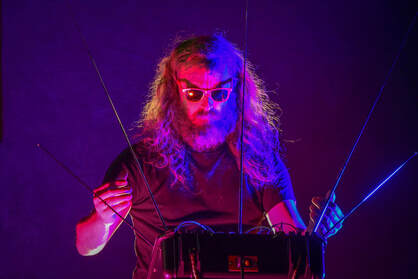
Chris Warren
In the Garden
Imagine a place where
IMPOSSIBLY RICH REVERBERATION
lets sounds gracefully linger in the air
to form lush harmonies that swirl around us.
The Omni Echo is an immersive synthesizer,
an augmented reality experience
that stretches sounds in time.
In the Garden
Imagine a place where
IMPOSSIBLY RICH REVERBERATION
lets sounds gracefully linger in the air
to form lush harmonies that swirl around us.
The Omni Echo is an immersive synthesizer,
an augmented reality experience
that stretches sounds in time.
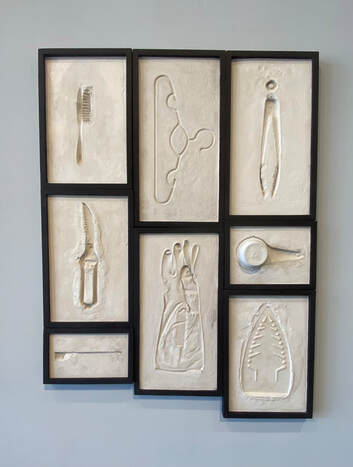
Christiana Updegraff
My work confronts societal gender norms and pushes back against notions of perfection, value, and keeping up appearances. It draws strongly on the entanglement of the home, family, and career, and references history, personal memories, literature, and contemporary society’s chauvinist zeitgeist. The installation piece Dutiful was created during my Artist in Residence at Art Produce specifically for the solo exhibition that followed. Made from more than 60 domestic objects donated by local caregivers, I am asking the viewer to interact with the space and the work in an unexpected and uncomfortable way. This work examines the minutiae of caretaking, through the repetition of linear pieces across the floor and up the wall, with pieces and details reaching beyond the viewer’s sight. The endless tasks of daily life at home and the loss of self in servitude to others is present even in the absence of these objects.
My work confronts societal gender norms and pushes back against notions of perfection, value, and keeping up appearances. It draws strongly on the entanglement of the home, family, and career, and references history, personal memories, literature, and contemporary society’s chauvinist zeitgeist. The installation piece Dutiful was created during my Artist in Residence at Art Produce specifically for the solo exhibition that followed. Made from more than 60 domestic objects donated by local caregivers, I am asking the viewer to interact with the space and the work in an unexpected and uncomfortable way. This work examines the minutiae of caretaking, through the repetition of linear pieces across the floor and up the wall, with pieces and details reaching beyond the viewer’s sight. The endless tasks of daily life at home and the loss of self in servitude to others is present even in the absence of these objects.
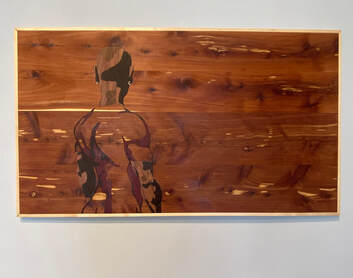
Christopher Lloyd Tucker
While in residence at Art Produce, I researched and studied art objects from the Kuba People of the Congo that are currently part of San Diego Mesa College’s World Cultures art collection. Exploration of Kuba practices and aesthetics informed the creation of a new set of artworks that seek to nurture and explore a visual conversation between my own sculptural practice and Kuba techniques and ideas.
While in residence at Art Produce, I researched and studied art objects from the Kuba People of the Congo that are currently part of San Diego Mesa College’s World Cultures art collection. Exploration of Kuba practices and aesthetics informed the creation of a new set of artworks that seek to nurture and explore a visual conversation between my own sculptural practice and Kuba techniques and ideas.
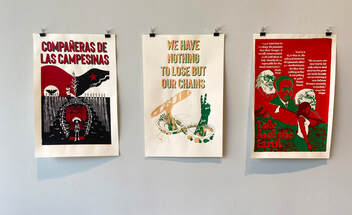
Colin Choy Kimzey
Using the garden as inspiration, I created a series of silkscreen posters exploring the radical possibilities and internationalist resonances of urban agriculture. Staged as an inside-out exhibition set against the backdrop of the garden itself, passersby were able to take free artworks from stacks of multiples and carry them across the city where they could take root in other contexts.
Using the garden as inspiration, I created a series of silkscreen posters exploring the radical possibilities and internationalist resonances of urban agriculture. Staged as an inside-out exhibition set against the backdrop of the garden itself, passersby were able to take free artworks from stacks of multiples and carry them across the city where they could take root in other contexts.
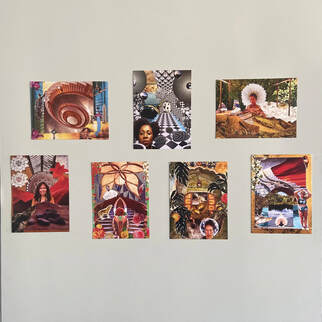
Constance Y. White
The workshop series is a process for participants to directly confront negative self-images. The series culminates with each participant making a personal collage that merges reality and imagination. Conceptually, the project presents individual personas as Goddesses realized in their own constructed spacial realms. The following women participated in the collage workshop and created their stories:
Denise Pappas, Diandra Stithe, Elizabeth Salaam, Nneka Erondu,
Patricia Hemans, Patricia McQuater
The workshop series is a process for participants to directly confront negative self-images. The series culminates with each participant making a personal collage that merges reality and imagination. Conceptually, the project presents individual personas as Goddesses realized in their own constructed spacial realms. The following women participated in the collage workshop and created their stories:
Denise Pappas, Diandra Stithe, Elizabeth Salaam, Nneka Erondu,
Patricia Hemans, Patricia McQuater
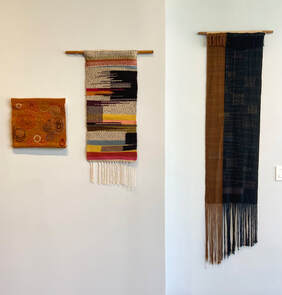
Evan Tyler Scoggins
I used my time at Art Produce to continue exploring cultural anthropology through craft. My work seeks to showcase the vibrancy of nature, both flora and fauna, through the utilization of natural dyes and various fiber arts.
I used my time at Art Produce to continue exploring cultural anthropology through craft. My work seeks to showcase the vibrancy of nature, both flora and fauna, through the utilization of natural dyes and various fiber arts.
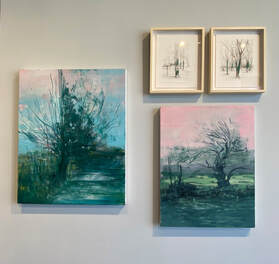
Melanie Taylor
During the residency I will create a series of drawings from observation and related interpretive works of local urban trees. The drawings will be portraits of individual trees and tree groups, aiming to bring awareness to their character and significance in our environment. Through the drawings I hope to encourage knowledge of urban horticulture and its role in reducing effects of pollution and environmental stress while improving physical and mental health.
During the residency I will create a series of drawings from observation and related interpretive works of local urban trees. The drawings will be portraits of individual trees and tree groups, aiming to bring awareness to their character and significance in our environment. Through the drawings I hope to encourage knowledge of urban horticulture and its role in reducing effects of pollution and environmental stress while improving physical and mental health.
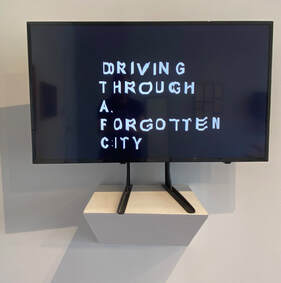
Nathan Storey
TIME MUST BE FORGOTTEN TO BE EXPERIENCED (REMIX LOOP)
TIME MUST BE FORGOTTEN TO BE EXPERIENCED is a slideshow of fragmented text from my writing practice. Influenced by cultural practitioners employing the cut-up technique like William S. Burroughs, Brion Gysin, and Genesis Breyer P-ORRDIGE, Storey’s text often exists in fragmentary form. Here, I have hand manipulated and distorted phrases through printing, re-printing, and re-photographing, a process known as electrophotography. Through this gesture, the writing becomes a liquefied image.
TIME MUST BE FORGOTTEN TO BE EXPERIENCED (REMIX LOOP)
TIME MUST BE FORGOTTEN TO BE EXPERIENCED is a slideshow of fragmented text from my writing practice. Influenced by cultural practitioners employing the cut-up technique like William S. Burroughs, Brion Gysin, and Genesis Breyer P-ORRDIGE, Storey’s text often exists in fragmentary form. Here, I have hand manipulated and distorted phrases through printing, re-printing, and re-photographing, a process known as electrophotography. Through this gesture, the writing becomes a liquefied image.
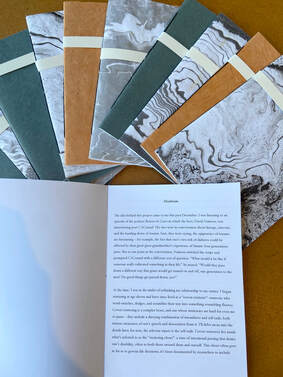
Talia Isaacson
The word “heirloom” derives from the Middle English words “heir” and “loom” — which, together, describe a tool or implement passed down from one generation to another. In my residency at Art Produce, I will be working on poems that reconsider my own stutter as an heirloom, asking: what, in and around ourselves, can we reconsider as an ancestral tool? What possibilities emerge when we do so?
The word “heirloom” derives from the Middle English words “heir” and “loom” — which, together, describe a tool or implement passed down from one generation to another. In my residency at Art Produce, I will be working on poems that reconsider my own stutter as an heirloom, asking: what, in and around ourselves, can we reconsider as an ancestral tool? What possibilities emerge when we do so?
